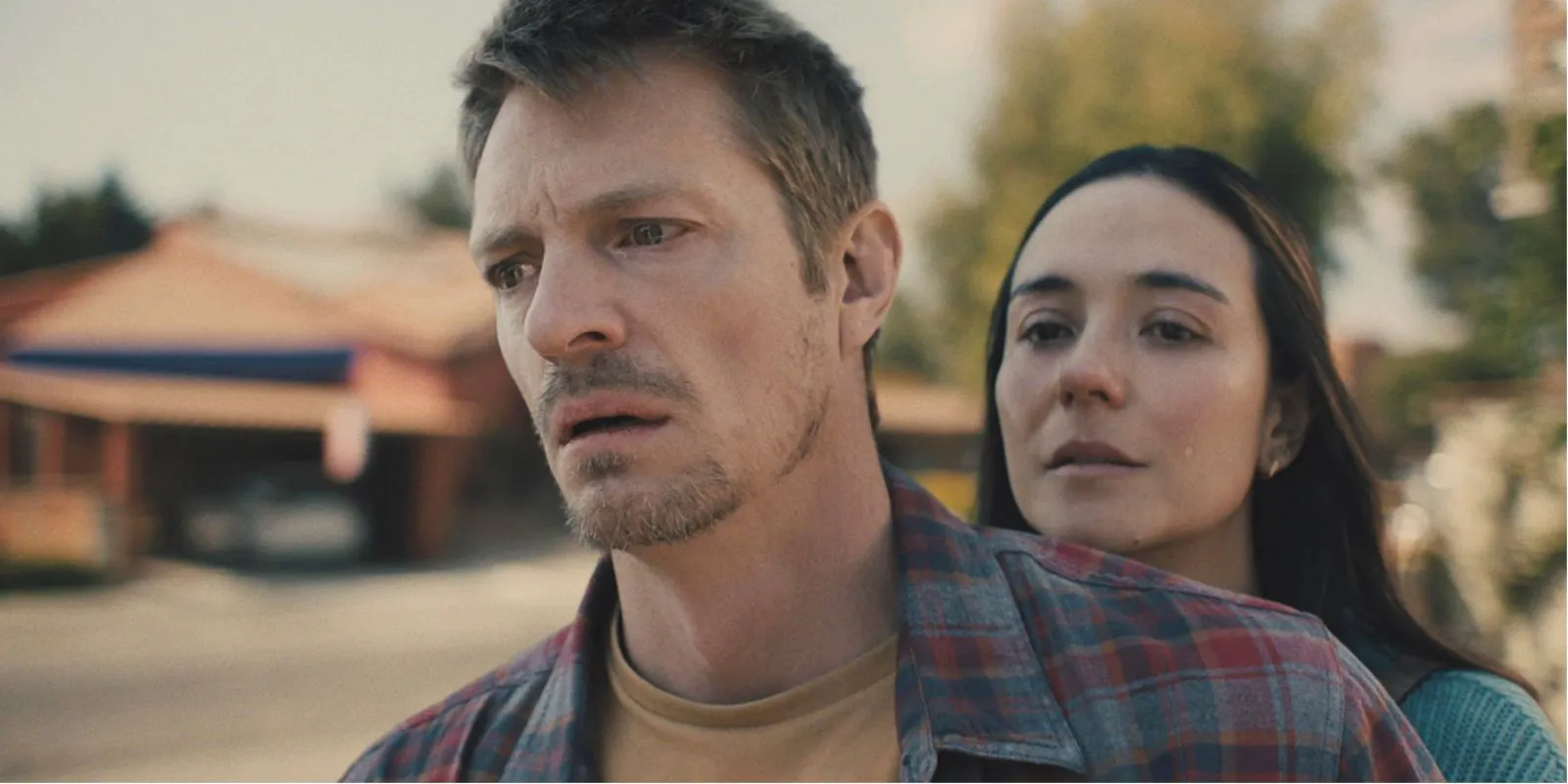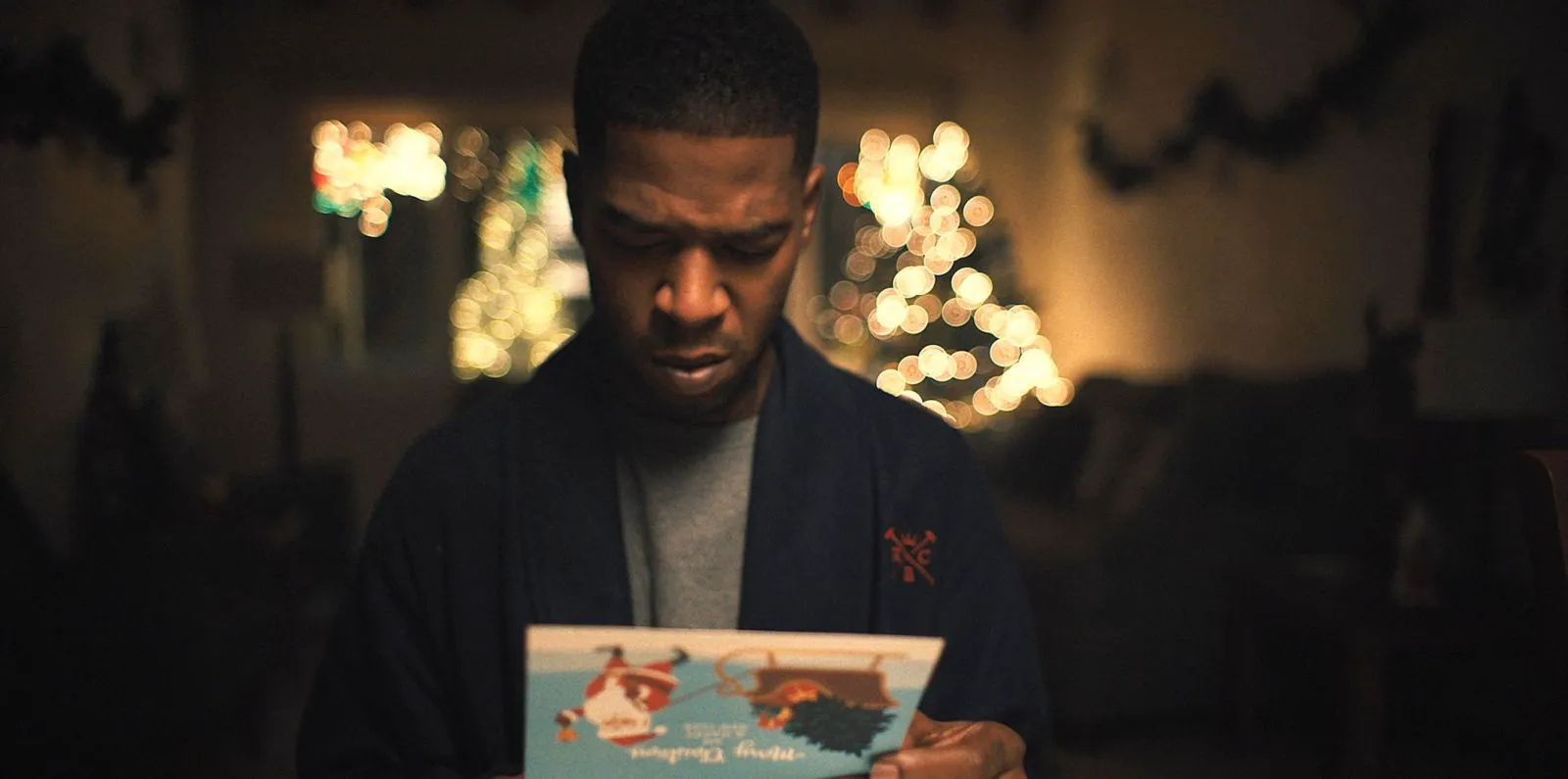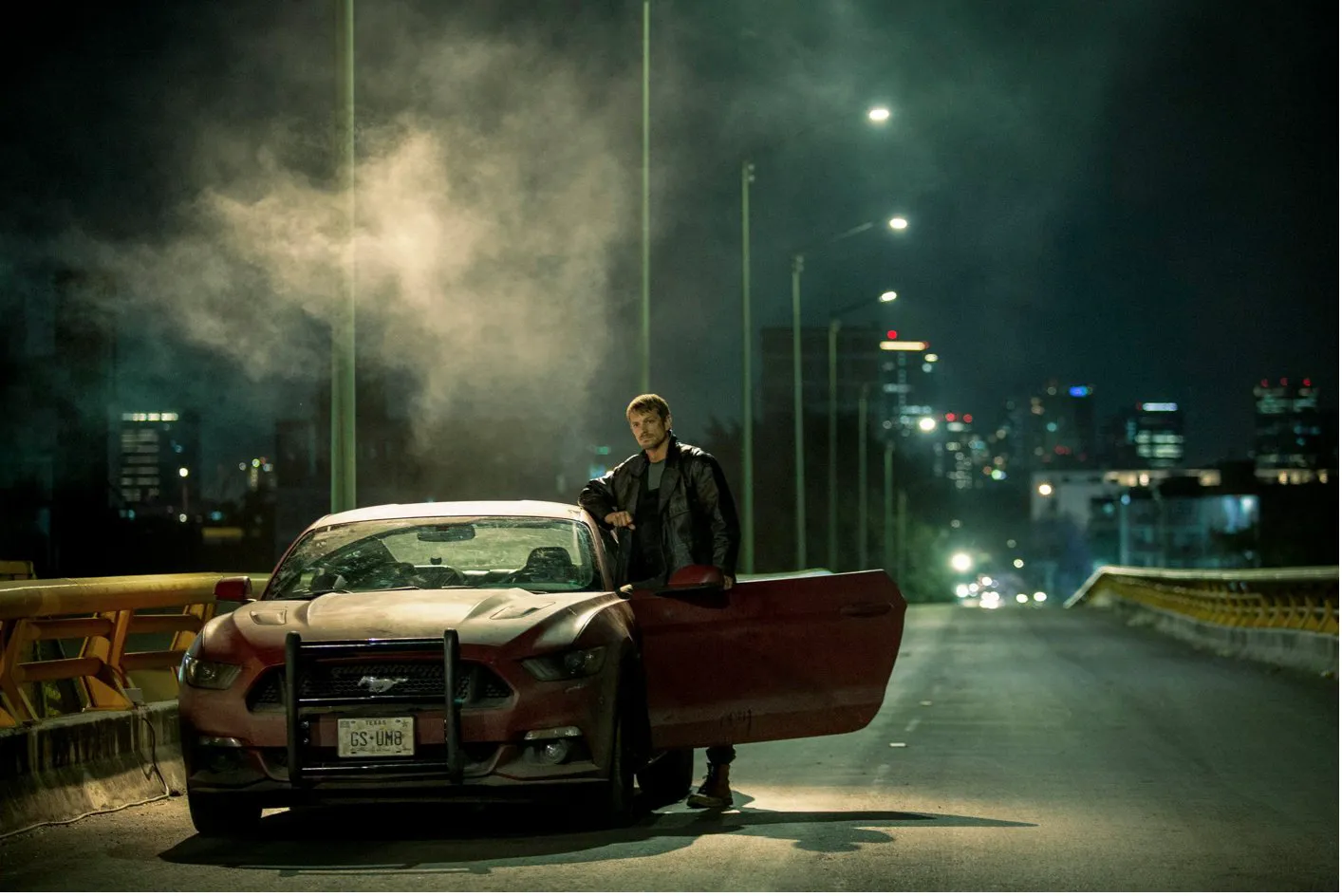Silent Night: John Woo’s Return to Form
Brian (Joel Kinnaman) is a blue-collar worker living with his wife (Catalina Sandino Moreno) and son in a modest home in a less-than-safe Los Angeles neighborhood. Their family bliss shatters on Christmas Eve when a barrage of gunfire erupts outside their home as rival gangs engage in a shootout. A stray bullet strikes Brian’s son, and in a fit of rage, the father pursues the criminals, only to be gravely wounded in the throat. Awakening in the hospital, Brian discovers he has lost not only his child but also his ability to speak. Consumed by grief and a burning desire for vengeance, he retreats into his garage, isolating himself from the world and his grieving wife. Revenge becomes his sole purpose. Brian marks his calendar, setting a grim goal: to kill the men responsible for his son’s death by the following Christmas Eve. He acquires a car, equipment, and begins training in firearms and hand-to-hand combat.

Joel Kinnaman as Brian in “Silent Night”
John Woo, renowned for his iconic action films like “Hard Boiled,” “Face/Off,” and “Mission: Impossible 2,” makes his return to Hollywood with “Silent Night.” After two decades of directing historical dramas for Chinese audiences, Woo seems to have missed the action revolution spearheaded by Gareth Evans, Chad Stahelski, and David Leitch. As a nod to younger audiences, he casts Kid Cudi in a supporting role. However, expecting a whirlwind of innovative action from the outset would be a mistake. Kinnaman’s silent protagonist spends a significant portion of the film mourning and meticulously preparing for his night of reckoning. Woo painstakingly guides Brian through the stages of grief, documenting his progress in mastering weapons, and savors the first confrontation with a captured gang member for a solid ten minutes.

Kid Cudi as Vassell in “Silent Night”
Visual Storytelling
However, it would be inaccurate to say that the quieter moments of “Silent Night” are uninspired. The absence of dialogue actually works in the film’s favor. Viewers are riveted to Brian, while other characters remain on the periphery. The protagonist’s inability to speak transforms “Silent Night” into a compelling exercise in visual storytelling. Woo’s camera is dynamic, inquisitive, and, in contrast to Brian, remarkably verbose. Throughout the film, there is never any ambiguity about what is happening on screen, demonstrating that the 77-year-old director has lost none of his skill.

Joel Kinnaman as Brian in “Silent Night”
Woo’s Signature Style
Woo’s signature style, familiar to audiences since his Hong Kong period, remains intact. Gunshots are loud and impactful, explosions and fires engulf the surroundings, chases are frantic yet grounded, and time slows down to highlight particularly striking moments of retribution. The trademark dual-wielding gunplay is also present. Brian, however, is an ordinary man, not a legendary assassin or a highly trained operative. Overwhelmed by circumstances and consumed by vengeance, he experiences fear, makes mistakes, sustains injuries, and harbors no illusions about the outcome of the final confrontation.
A Nostalgic Experience
The strengths and weaknesses of “Silent Night” are paradoxically intertwined. Audiences anticipating a John Woo film will find their expectations fulfilled. Watching the action movie is akin to a 20-year high school reunion: nostalgia and familiar faces evoke warmth, but everyone understands that the illusion will eventually fade. “Silent Night” exists in a parallel reality, a place to escape to for a brief period, spend an hour and a half, and then leave until the next wave of nostalgia hits.